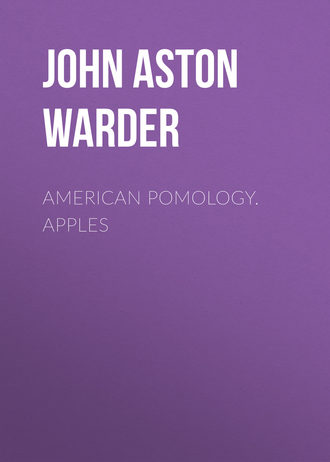 полная версия
полная версияAmerican Pomology. Apples
Layers are portions of the branches of a plant that have been induced to throw out roots, and which can thus set up an independent existence if removed from the parent tree. This mode of propagation is a very natural one, and was probably an accidental discovery. In its traits, it is the reverse of the mode we have just been considering. Here the branch emits roots, instead of the root emitting branches, as in the case of the sucker. Layering is frequently resorted to as a mode of propagation, it is very simple, easily performed, and, with some species, very certain in its results. Some plants will root readily if merely placed in contact with the ground, or very slightly covered with soil; others require some artificial interference, such as ringing, or twisting, or slitting. The raspberry, known as the Rubus occidentalis or Black-cap, belongs to the first class, and it even places itself in contact with the soil by recurving its branches so as to bring the tips to the earth, where they strike root, and make new plants. The grape comes under the second category, needing only a little assistance, and it is multiplied to a considerable extent in this manner. In the spring, the vines are laid out in a little shallow trench, and pegged down closely; as the buds burst, they throw up shoots which are trained vertically by tying them to sticks, and as soon as these shoots have acquired a certain degree of maturity and firmness, the mellow earth is drawn up to them and they emit a beautiful system of roots, and by the fall they form very fine plants, (fig. 3). The layered branch is then taken up and the several plants are separated, when it will be found that the best roots are chiefly from the lower joints of the new wood, rather than from the old canes that were laid down in the spring.
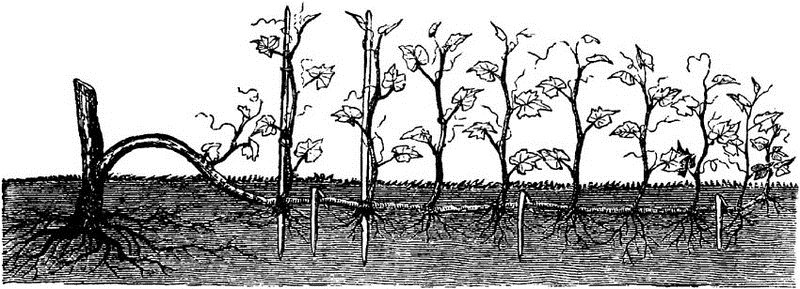
Fig. 3.—PROPAGATING THE GRAPE BY LAYERING.
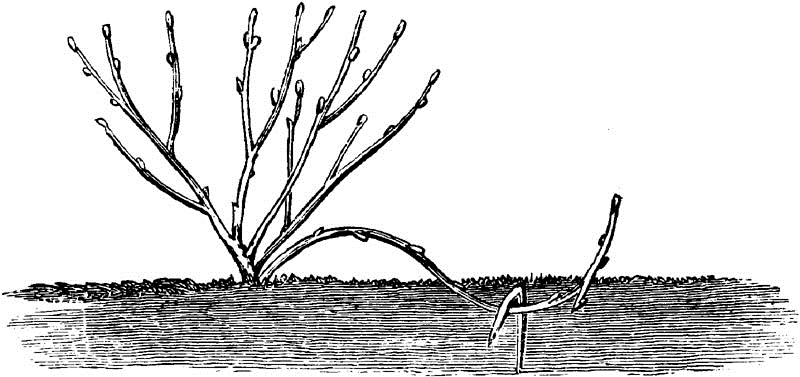
Fig. 4.—LAYERING THE QUINCE.
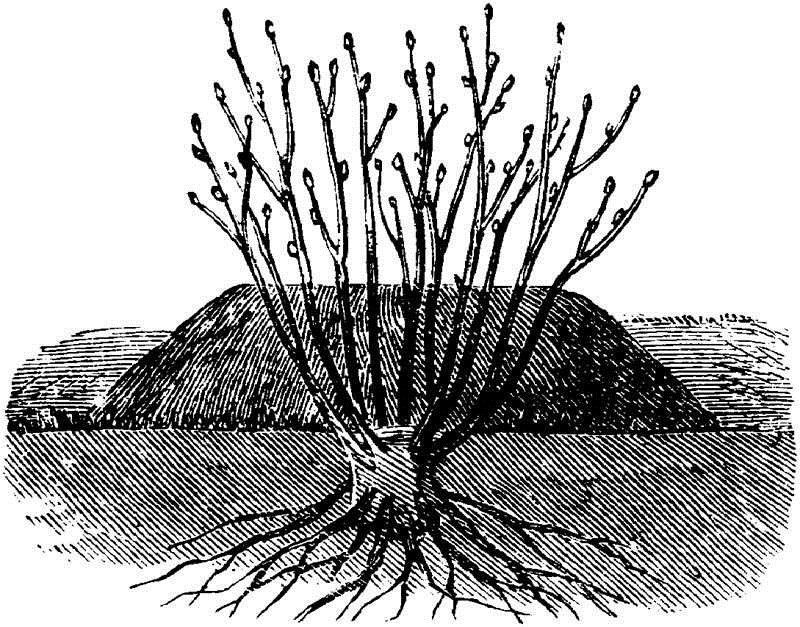
Fig. 5.—STOOL LAYERING THE QUINCE.
Quinces are considerably increased by a sort of layering, as the twigs emit roots very freely; they are often bent down, slightly twisted, or not, as the case may be, and covered with mellow soil, when they readily emit roots, become firmly established, and may be set out by themselves, (fig. 4). There is, however, another method of layering, much practiced in the multiplication of the quince; that called propagation by stools. The plants are set in open rows, four feet wide, and three or four feet apart in the rows; they should be so planted as to stand below the general surface, that is in trenches. When cut off at the ground in the spring, they throw up a great number of shoots, and the earth is gradually worked up to these to encourage their rooting, (see figure 5), which is often sufficient for removal the first season; if, on inspection, the roots are not found to be sufficiently large or abundant, the earthing is continued until the autumn of the next year, when they are removed, the stools trimmed of their lower roots, and reset in new trenches. The plants, thus raised from stools, are cut back severely, and are then ready to set out in nursery rows for budding. With the quince, cultivated in this manner, nothing is required but to accumulate the mellow earth about the shoots; but in many plants it is necessary to notch the wood by splitting, or cutting it for an inch or two, (as in fig. 6), making a tongue that separates from the lower portion of the shoot, and from which the roots are emitted. This slit should be commenced just below a bud, and the knife is drawn upward, cutting halfway through the wood. If commenced at one side instead of at the depending portion, the tongue is more sure to be separated from the stock, to which it might otherwise reunite. To insure rooting, some persons insert a little stick or chip between the separated portions, to prevent a re-union of the parts. The shoot, after being notched, is fastened down, and fine soil or compost is brought about it to encourage the development of roots. Few of the hard wooded fruit trees have been extensively propagated by means of layers; they might be so produced, but it has not been found profitable nor necessary.
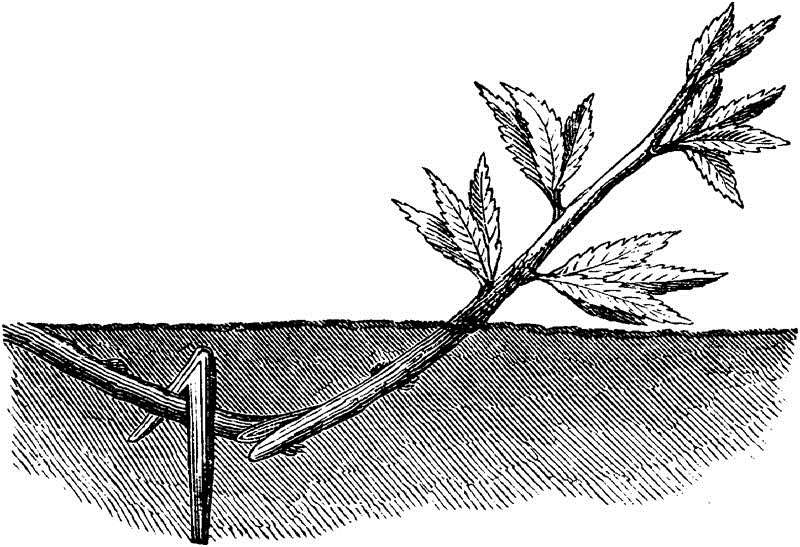
Fig. 6.—MANNER OF CUTTING AND PEGGING DOWN A LAYER.
A very common opinion prevails that layering exhausts the mother plant, or vine, which is used in this mode of propagating. If properly conducted, there is no reason why this should be; but if the whole top of any plant is bent down and made to take root, and to form independent roots, there can be little or no return from the branches to the original stock to strengthen it. A certain amount of healthy growing wood should always be left in its natural position, and no danger to the plant need be apprehended.
The wood growth of the strawberry, when allowed to take its natural bent, is directed into the stolons or runners, which form natural layers. Their production detracts from the central wood-growth of the plant, and exhausts its strength to such a degree, that it often dies, whereas, by a constant removal of the runners, as fast as they appear, we practice a sort of summer pruning or pinching, which results in the production of a large branching stool, with many points or centers for the production of foliage and flowers, and thus insure the greatest abundance of fruit. The strawberry, like one species of the raspberry, and many other of our native plants, offers illustrations of natural layering.
Seeds.—The most common as well as the most natural mode of multiplying the individual plants of most of our fruit trees, is by sowing the seed; from this source we procure stocks upon which are worked, by budding or grafting, the several varieties we may desire to propagate. As an illustration of this process, I propose to speak of apple seedlings.
The almost universal means of increasing the number of apple trees, is by sowing the seed. This is generally selected and separated from the fresh pomace left on the press in cider-making. The old and slow process of hand-washing has given way, in this age of labor-saving machinery, to more economical methods. The most approved apparatus is constructed upon the principle of separating the seeds from the pulp by means of their greater specific gravity; it is, indeed, much like a gold washer, being a series of boxes or troughs through which a current of water is made to flow; this carries the lighter portions away from the seeds, the contents of the boxes being agitated from time to time. At the close of the process, the clean seed is found in the bottoms of the boxes, whence it is removed and carefully dried, by putting it in an airy place, and stirring it frequently to prevent mildew and fermentation. Well prepared seed is plump and bright, and should feel cold to the hand. When the pips are broken, they should be white and clear within; but the best test of their quality, is to sprout a portion, and count the plants produced by a given number of seeds.
Sowing.—The seeds may be put into the ground, either in the fall, or spring. The soil having been well prepared, and deeply pulverized, is thrown up in beds a few feet wide, and the seed sown in close drills across; or without the beds, it may be sown in broad drills, by hand, or with a machine, the rows at such a distance as to allow of culture by horse-power. It is desirable, in either case, to get an early start and a good stand; the weeds must be kept under from the very first, and not allowed to have the mastery for a single day. Thorough culture during the season, upon a deeply tilled soil, of such a character as to retain moisture, will be found highly advantageous in the production of this crop, and will insure immunity from leaf-blight and other adversities. Some recommend sprouting the seed a little before planting. If it have been kept during the winter mixed with its bulk of sand, which is a good plan, the whole may be subjected to a gentle heat as in a hot-bed, for a few days, just before planting. During this time the mass must be stirred and turned every day, to prevent fermentation and to secure an even start. Whenever the germ makes its appearance at the points of the seeds, which is called pipping, the sowing must begin, and should be done as quickly as possible; the covering is to be slight, and the earth should be friable and not disposed to bake. The depth at which the apple seed is to be covered will depend upon the present and prospective state of the weather, lighter if moist, heavier if dry, for a continued drouth might be fatal to sprouted seed, if it were planted too near the surface; but when the weather is not dry, it is advised that the shallower the seed is sown, the better. The objection has been made to sprouting, that if the process have advanced too far, the seedlings will be apt to have a crook at or near the collar, instead of the straight fusiform appearance they should possess when presented to the grafter.
These seedlings furnish the stocks upon which to work the finer varieties of the apple. They are taken up in the autumn with their long clean roots, which are often longer than their tops, the leaves are stripped off, and they are assorted; the larger are packed away in earth or saw-dust in the grafting department, or heeled-in out of doors, and covered in such a way as to be accessible at any time they may be needed during the winter. The smaller stocks are heeled-in for spring planting in nursery rows for budding, or they may be left in the original rows for another year's growth as seedlings. If the plants have been well grown and not too thick, so that the majority are of sufficient size, it will be better to take them all up at once and assort them as just indicated, otherwise the largest only may be drawn separately when the ground is soft with autumnal rains, leaving the smaller seedlings for another year's growth. In assorting and selling the stocks, nurserymen make about three classes. The very largest, as thick as a lead-pencil, are called extra, or two-year old, and command a higher price. The next size, called 1st class stocks, are large enough for co-aptation to the average scions, and long enough to make two cuts each for grafting; and those that fall below this requisition are considered second class, and are either thrown aside or set out for budding, and for stock or collar-grafting in the rows.
PROPAGATION.—SECTION II.—GRAFTING
A MODIFICATION OF CUTTINGS—SUCCESS DEPENDANT UPON CELL-GROWTH. FORMING A UNION WITH THE STOCK—LIMITS TO GRAFTING DEPENDANT UPON THE ANATOMY OF THE PLANT—PHYSIOLOGICAL BOUNDS—SUCCESS IS IN PROPORTION TO THE AFFINITY—SEVERAL SPECIES AS STOCKS—DISTINCT GENERA—NARROW LIMITS—REQUISITES—EFFECTS OF UNCONGENIAL STOCKS—NATURAL GRAFTING IS INARCHING—GRAFTING BY APPROACH—VARIOUS METHODS OF GRAFTING—WHIP, CLEFT, SADDLE, SIDE, ETC—ILLUSTRATIONS—TYING, WAXING, ETC—RE-GRAFTING OLD ORCHARDS—RENEW SUCCESSIVE PORTIONS OF THE TREE; TOP FIRST—GRAFTING MACHINES—ROOT-GRAFTING—PREPARATION OF THE SCIONS—OF THE ROOTS—PRESERVATION OF THE GRAFTS—DIVISION OF LABOR—DIFFERENT PORTIONS OR SECTIONS OF THE ROOTS—STOCK-GRAFTING—GRAFTING-WAX—SEASONS FOR—PROLONGED—SELECTION OF SCIONS—TIME FOR CUTTING—MODE OF PRESERVING—TREATMENT OF GRAFTS.
Grafting is but a modification of propagation by cuttings. The scion is a cutting of the variety we wish to propagate, which, instead of being committed to the ground to emit its own roots, is placed in contact with tissues of a nature similar to its own, through which it is to form a connection with the roots and the soil. The success of the operation depends upon the formative cell in this instance also, as in the cutting; new cells are formed upon the cut surface, and the intercommunication takes place through them. Hence we have anatomical limits to grafting; there are physiological bounds beyond which we cannot pass, in our combinations of scion and stock. Our success is in the direct ratio of the affinity that exists between them; thus apple grows best on apple, and even among these we find the closest union and the best results, where there is a similarity between the style of growth, and probably in the character of the cells.
We say, as a general rule, that stone fruits must be grafted upon stone fruits, those bearing seeds, upon seed fruit; but there are limits even here which confine us upon one hand, and give us more latitude upon the other. Thus the cherry may be worked upon the wild cherry (Prunus Virginiana) but it forms a very poor union; the pear will grow upon the thorn, which has a very different seed, but the union is very imperfect and the tree is short-lived; the apple would appear to be much nearer of kin, since it belongs to the same genus, but though the pear will grow vigorously upon this stock, it is no more permanent than upon the thorn: either of them will answer when grafted low, or in the root, to start the cutting, as the scion may then be considered, and to sustain it until it shall have supplied itself with roots. In top-grafting the pear upon a tree of either species, it is found essential to success, and it conduces to the greater durability of the tree, for some branches of the original stock to be left intact to secure the circulation of the trunk, as the union of the dissimilar cells is so imperfect that it does not furnish sufficient vent for the sap. In the case of the cherry we find that the varieties appear to have a greater affinity for those of their own race; thus the Dukes and Morellos do well when grafted upon the Morello stocks, whereas the Hearts and Bigarreau sorts do not make a good union upon these stocks, but prefer the Mazzard, which has a freer growth more like their own. Most varieties will do well upon the Mahaleb stock, which is used as a means of dwarfing this fruit, though not a dwarf. Upon the wild cherry, which belongs to quite a different section of the genus, the cultivated varieties will grow, but they form a very imperfect union.
The peach may be worked upon the plum stock, and is claimed to be somewhat dwarfed by it, and to produce superior fruit. This stock is more congenial to the apricot, which is frequently propagated upon it. Both plums and apricots may be worked upon the peach stock, and they will grow very vigorously, as they will upon the wild plum, but they soon over-grow, and are very apt to break off. When either of these species is used as a stock for the plum or apricot, they should be considered merely as a nursing mother, like the apple or thorn to the pear, which may be wanted to help the cutting until it shall be prepared to stand alone, and feed itself from its own roots. In other words, they should be grafted, not budded, into these uncongenial stocks, and the operation should be performed in the collar or below it, in the root, so that the growing scion may be earthed up, and encouraged to furnish itself with a good system of roots of its own. The success will then depend upon the ability of the scion to emit roots freely.
We must never forget that in grafting, we are confined to very narrow limits. Our scion must be of a similar nature with the stock, each must have cells of a similar character, capable of transmitting their nutritious fluids from one to the other. We must recollect likewise, that the parts must be so co-apted that the cells of wood growth shall be brought into as close connection as possible, in both scion and stock; these cells are found in the layer, called the cambium, which is between the wood and the bark. The crude sap from below will often pass from cell to cell, when the elaborated sap of the cells in the scion is wholly unfitted for the formation of wood cells in the stock below it; of course the union in such a case must be very imperfect, and the product of such a grafting will be subject to accident, and will be short-lived, though the result in fruit, while the union continues, may be very precocious, abundant, and of superior flavor.
Natural grafting may often be observed by the student of nature when wandering among his favorites of the sylvan shades. There can be no doubt that the first hint was thus communicated to the early gardeners. In nature we always find the grafting to be inarching, or grafting by approach; two limbs or even two trees approximating closely, have abraded one another, and have afterward united their tissues most firmly together. This is generally a union of two trees of the same variety or species; but such is not always the case; sometimes trees of very dissimilar natures unite in this manner, but when we examine them we find only a dove-tailing, only a mechanical union, but no vital action subsists between them. The ancients give us some fancy sketches of the unions by grafting of very dissimilar trees, and some moderns who have no higher claim to poetry than their romancing, tell us that we may graft the peach upon the Willow and Buttonwood, and form other equally impossible unions.
The different methods of performing the operation of grafting vary with the character and size, and condition of the stocks to be worked; thus we have splice grafting, whip, cleft, saddle, and side grafting with modifications, and also grafting by approach, which is generally called inarching—though sometimes also practiced where we desire to renew the roots of a tree that are unhealthy, or to restore those that have been removed by accident or by the erosion of some rodent animals.

Fig. 7.
Splice Grafting is the simplest process, and is applicable only where the size of the stock and of the scion correspond pretty nearly; the two are cut with a sloping curve, each of which being made at the same angle, will coincide with the other when they are applied together, as represented in the engraving, fig. 7.
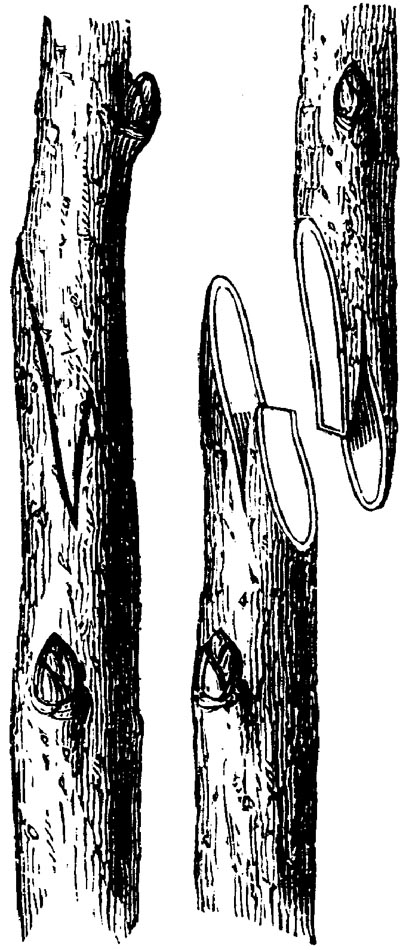
Fig. 8.—WHIP GRAFTING.
Whip Grafting is a modification of the above. Each portion is cut in a sloping manner as in the splice grafting, but each is also split with a thin-bladed knife, as represented in fig. 8. The object in this is to give a firmer union to the two portions, and also to present a more extended surface for the effusion of the new cell tissue that is to form the bond of union in cementing them together. In both these methods, but especially in the first, the parts must be held together in co-aptation by some kind of bandage; this is generally composed of grafting wax, spread upon cloth or paper, or even, as now extensively practiced, upon fine thread. Cotton yarn No. 3 is drawn through melted grafting wax, and as it cools, it is wound upon a reel at the other side of the room, whence it is drawn as wanted by the grafter or tyer. Tying or wrapping is always a good precaution, and when the splice or cleft graft is not very close, it becomes necessary; but thousands of grafts will unite equally well where the parts are covered with earth, without any such appliance.

Fig. 9.—DIFFERENT STEPS IN CLEFT GRAFTING. A, SCION PREPARED FOR SETTING. B, THE CLEFT OPENED BY A WEDGE.
C, THE SCION INSERTED. D, SECTION OF STOCK AND SCION TO SHOW THE CO-APTATION OF THE PARTS OF THE TWO.

Fig. 10.—CLEFT GRAFTING WITH
BOTH SCIONS INCLINED INWARD.
Cleft Grafting is generally done when the stock is larger than the scion, and also where the operation is performed at a point above the ground. The stock is split downward, after having been cut off at the point where the grafting is to be done. The knife should be sharp, and the bark should be cut through first, to avoid its being torn, and so that the sides of the cleft shall be smooth. A wedge is inserted to keep the cleft open for the insertion of the scion, which is cut on each side like a fine wedge; but the two planes not being parallel, the bark will be left on one side to the very point of the wedge, while on the other it will be removed a part of the way, making a feather edge, A, fig. 9. The object of this is to have the pressure of the cleft greatest upon the outer side, where the union is to be effected. It is well to have a bud on the strip of bark left between the two cuts used in forming the graft, this should be near the top of the cleft. One or two grafts may be inserted into a cleft, or more clefts may be made, in large stocks, or in re-grafting the large limbs of an old tree, but usually one is sufficient to leave growing; and in the young tree, only one should ever be allowed to remain. When the scion is nicely set into the cleft, so that the inner bark of the stock and graft shall coincide, or rather cross a very little, (see fig. 10,) the wedge, whether of hard wood, or of iron, should be gently withdrawn, and then the elasticity of the stock will hold the scion firmly to its place; this pressure should not be too severe. In this kind of grafting, if the pressure be sufficiently firm, and if the operation have been performed below the surface of the ground, it may not be necessary to make any other application than to press the moist earth about the parts, and cover all but the top of the graft with soil, and place a stick to indicate the plant and protect it from injury. If, on the contrary, the pressure of the cleft be not sufficient to hold the scion firmly, as in small stocks, the graft must be tied. For this a piece of bass matting, or cotton twine, may be used; and if the operation has been performed above ground, the whole must be covered with grafting wax, applied, either hot with a brush, or cold, after having been worked with the hands, or by wrapping with strips of muslin or paper previously spread with the wax. In old times grafting clay was used, and applied with the hands as a lump around the junction; but this disagreeable and clumsy appliance has given way to more elegant and convenient arrangements.

Fig. 11—SIDE GRAFTING.
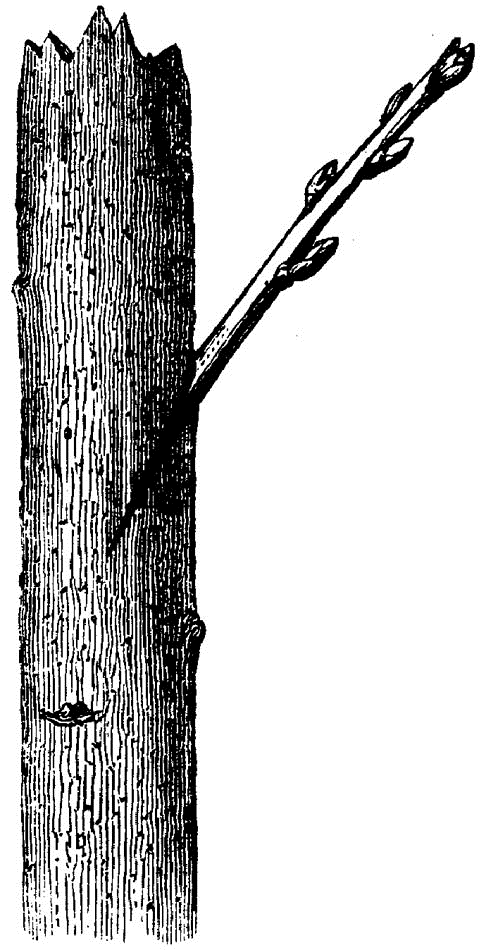
Fig. 12—SIDE GRAFTING—THE STOCK NOT CUT BACK.
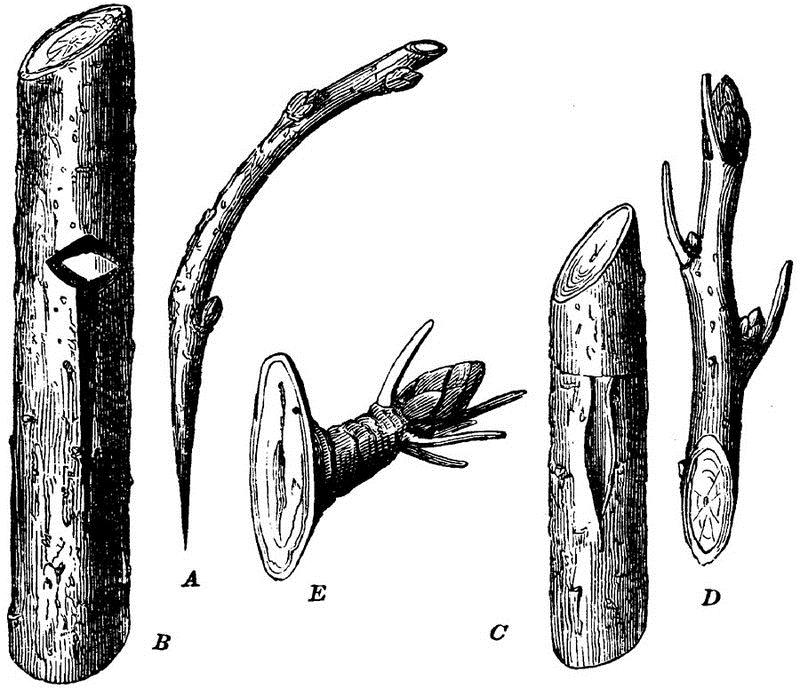
Fig. 13.—TWO FORMS OF SIDE GRAFTING.—A, B, THE SCION AND STOCK FOR THE RICHARD SIDE GRAFT. C, STOCK FOR THE GIRARDIN SIDE GRAFT. D, SCION, AND E, FRUIT BUD FOR THE SAME.
Side Grafting is performed in two ways. In one it is a modification of cleft grafting in which there is no cleft, but the bark is started from the wood, and the scion, cut as shown in figure 11, is pressed down between the wood and bark. This can only be done late in the spring, after the sap has begun to flow in the stock, so that the bark will run; it is indeed more like budding than grafting. The other modification is done without cutting off the stock. The knife is applied to the side of a stock of medium size, and a cut is made downward and extending to one-third the diameter, fig. 12; the scion is cut as for cleft grafting, and inserted so as to have the parts well co-apted, and then secured as usual. This plan is useful where there is danger of too free a flow of sap from the roots. Two other kinds of side graft are shown in fig. 13. The left-hand figures show the Richard side graft, in which an arched branch, A, is used. This is inserted under the bark of the stock, B; above the graft an incision is made in the stock down to the wood, to arrest the flow of sap. After the insertion, the wound is covered with grafting wax. The Girardin side graft is illustrated at the three right-hand figures. A fruit bud, E, or a graft with a terminal fruit bud, D, is inserted under the bark of the stock, C, in August, or whenever suitable buds can be obtained and the bark will run. The wound is tied and covered with wax, as before. The object of this grafting is to secure immediate fruitage. Another kind of side grafting consists in plunging a dirk-shaped knife directly through the tree, inclining the point downward, into this opening the graft is inserted; the object being to establish a limb on a naked portion of the trunk.

